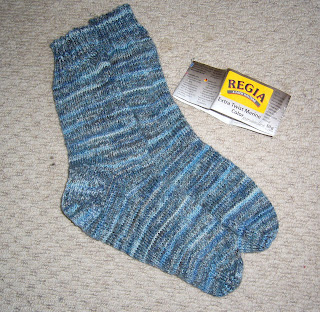Each week, while I was growing up, my mother would have a baking day. She was what was once called "a good plain cook", and in fact worked as a cook in her later years, at an approved school for boys, knocking up batches of stew and rice puddings.
Baking for Cumbrian farmers' wives was then, and is still, not a matter of making a few cupcakes. The calorific demands of heavy manual labour are considerable, and cake was one way to meet this need.
My mother would make traybakes: currant cake, German cake, nutty, which was a kind of flapjack, and gingerbread. Sometimes the German cake would be jam buns - she never made rock buns. Neither did she bake bread, although she remembered this from her own childhood with wonder - how did they bake once a week and still eat it at the week's end? She always had a fruit loaf on the go - vinegar loaf or bran loaf. When her memory began to fail, she still remembered how to make bean cake with Rice Krispies, marshmallows and toffee.
Strangely, I did not learn to cook from my mother; in fact, when I left home to go to university I was completely ignorant on the subject. My mother always said that we could not risk wasting the ingredients. This is strange, because she never once said that to me about fabric, and she spent lots of time showing me how to sew. Now, I think it must have been that she did not want to relinquish what she saw as her central role, as the provider of the food.
Today, inspired by Mary Berry's cookbook, I produced this chocolate cake, destined for the Spinners and Weavers AGM. Producing the loaf of bread, in my trusty breadmaker, was a much simpler enterprise, so simple that I make one virtually every day now. I use a mix of two cups of white flour to one cup wholemeal to make a firm textured loaf.
This second picture shows the cake iced with a chocolate ganache, made by melting dark chocolate into double cream. How could that not be delicious? I used apricot jam to sandwich the layers together.
Baking for Cumbrian farmers' wives was then, and is still, not a matter of making a few cupcakes. The calorific demands of heavy manual labour are considerable, and cake was one way to meet this need.
My mother would make traybakes: currant cake, German cake, nutty, which was a kind of flapjack, and gingerbread. Sometimes the German cake would be jam buns - she never made rock buns. Neither did she bake bread, although she remembered this from her own childhood with wonder - how did they bake once a week and still eat it at the week's end? She always had a fruit loaf on the go - vinegar loaf or bran loaf. When her memory began to fail, she still remembered how to make bean cake with Rice Krispies, marshmallows and toffee.
Strangely, I did not learn to cook from my mother; in fact, when I left home to go to university I was completely ignorant on the subject. My mother always said that we could not risk wasting the ingredients. This is strange, because she never once said that to me about fabric, and she spent lots of time showing me how to sew. Now, I think it must have been that she did not want to relinquish what she saw as her central role, as the provider of the food.
Today, inspired by Mary Berry's cookbook, I produced this chocolate cake, destined for the Spinners and Weavers AGM. Producing the loaf of bread, in my trusty breadmaker, was a much simpler enterprise, so simple that I make one virtually every day now. I use a mix of two cups of white flour to one cup wholemeal to make a firm textured loaf.
This second picture shows the cake iced with a chocolate ganache, made by melting dark chocolate into double cream. How could that not be delicious? I used apricot jam to sandwich the layers together.













.JPG)